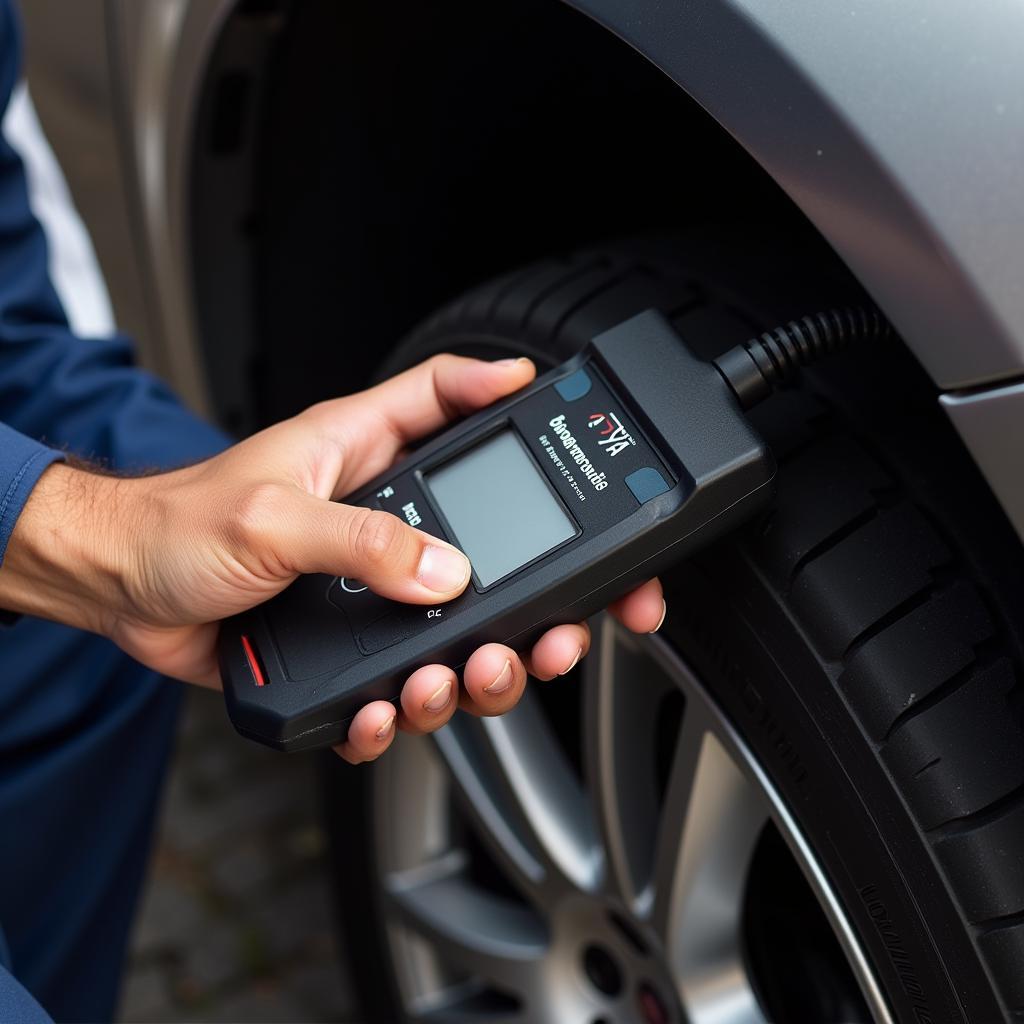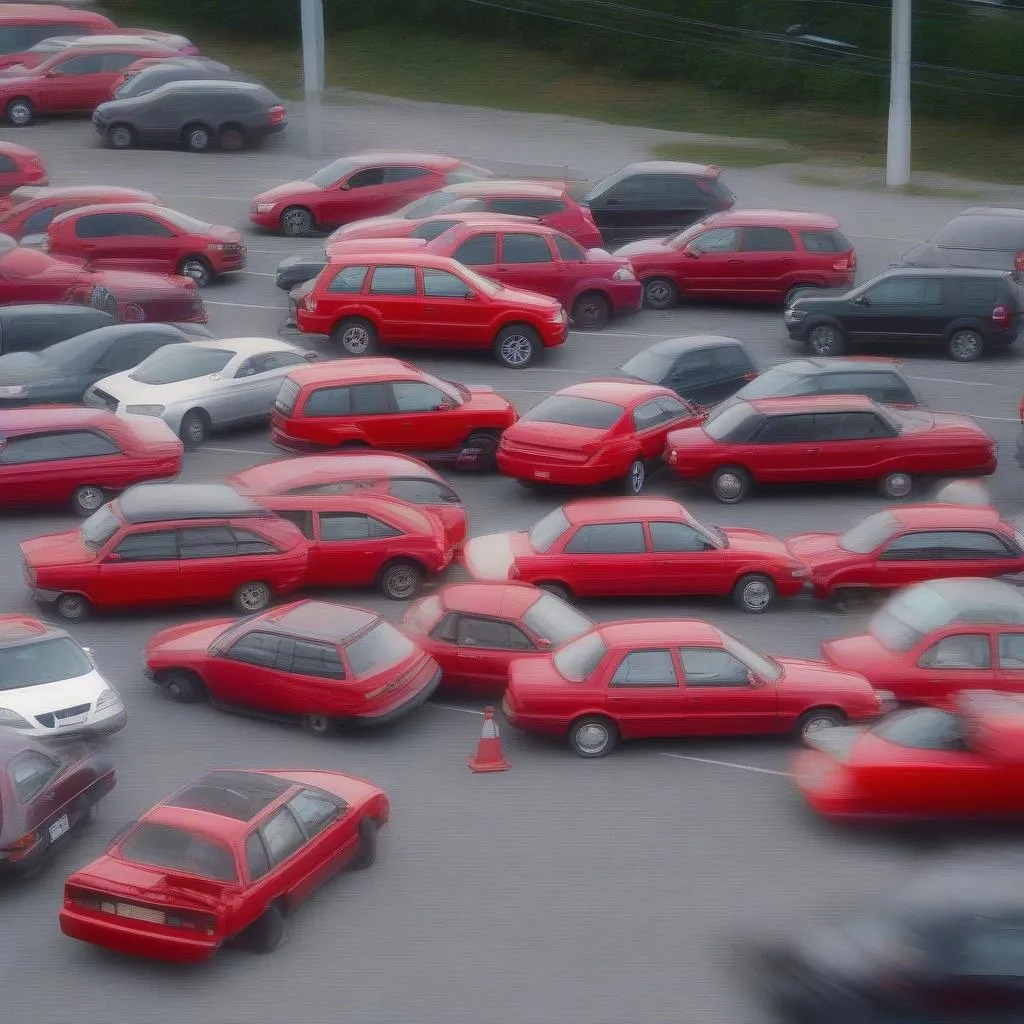The dreaded DSC and brake warning lights illuminating your dashboard can be a nerve-wracking experience. Understanding why these lights appear and how to address the underlying issues is crucial for maintaining your vehicle’s safety and performance. This guide provides a comprehensive overview of the common causes, diagnostic procedures, and potential solutions for fixing DSC and brake warning lights.
Understanding the DSC and Brake Warning Lights
The Dynamic Stability Control (DSC) system is a critical safety feature that helps prevent loss of control during challenging driving conditions. The brake warning light, on the other hand, signals issues within the braking system itself. When both lights illuminate simultaneously, it often indicates a connection between the two systems. Ignoring these warnings can lead to decreased braking performance and an increased risk of accidents.
Common Causes of DSC and Brake Warning Light Illumination
Several factors can trigger both the DSC and brake warning lights. These include:
- Low Brake Fluid: A common culprit, low brake fluid levels can trigger both warning lights. This can be due to leaks, worn brake pads, or simply needing a top-up.
- Faulty Wheel Speed Sensors: These sensors play a crucial role in the DSC system, monitoring each wheel’s rotational speed. A malfunctioning sensor can disrupt the system, triggering the warning lights.
- ABS Module Issues: The Anti-lock Braking System (ABS) module is closely integrated with the DSC. Problems within the module, such as internal faults or electrical issues, can affect both systems.
- Steering Angle Sensor Malfunction: This sensor provides information about the steering wheel’s position, which is essential for the DSC to function correctly. A faulty sensor can lead to inaccurate readings, triggering the warning lights.
- Brake Pad Wear: Worn brake pads can activate the brake warning light and indirectly affect the DSC system, causing both lights to illuminate.
Diagnosing the Problem
Accurately diagnosing the root cause of the issue is crucial for effective repair. Here’s a step-by-step guide:
- Check Brake Fluid Level: Inspect the brake fluid reservoir and ensure the fluid level is within the recommended range.
- Visual Inspection: Carefully examine the brake lines, calipers, and rotors for any signs of leaks or damage.
- Diagnostic Scanner: Utilizing a diagnostic scanner can retrieve specific trouble codes related to the DSC and braking systems, pinpointing the problem area.
- Professional Inspection: If the initial steps don’t reveal the cause, it’s advisable to consult a qualified automotive technician for a thorough inspection and diagnosis.
“A diagnostic scanner is an invaluable tool for identifying specific fault codes, enabling a more targeted and efficient repair approach,” says automotive diagnostics expert, John Stevenson, ASE Certified Master Technician.
 Mechanic Using Diagnostic Scanner on Car
Mechanic Using Diagnostic Scanner on Car
Fixing the DSC and Brake Warning Lights
Once the cause is identified, the appropriate repair can be implemented. Some common solutions include:
- Topping up or Replacing Brake Fluid: If low brake fluid is the culprit, simply top it up to the recommended level. Persistent low fluid indicates a leak, requiring professional repair.
- Replacing Faulty Sensors: Damaged or malfunctioning wheel speed sensors, steering angle sensors, or other related sensors will need replacement.
- Repairing or Replacing the ABS Module: Depending on the specific issue, the ABS module may be repairable or require replacement.
- Addressing Brake Pad Wear: Replace worn brake pads to ensure optimal braking performance and prevent further issues.
“Addressing brake pad wear promptly not only improves braking performance but also prevents potential damage to other braking system components,” advises Sarah Miller, Lead Technician at Miller Automotive Solutions.
Remote Diagnostics and Software Solutions
In some cases, the issue might be software-related. Remote diagnostics and software updates can be performed by specialized technicians to address such problems. This approach can often provide a quicker and more convenient solution than traditional methods.
Conclusion
Addressing the DSC and brake warning lights promptly is essential for your safety and the longevity of your vehicle. By understanding the common causes, utilizing appropriate diagnostic procedures, and implementing the correct solutions, you can effectively resolve these issues and ensure your car remains in optimal condition. Ignoring these warnings can lead to more significant problems and potentially dangerous driving situations. Don’t delay, take action to fix your DSC and brake warning light today.
FAQ
-
What does it mean when both the DSC and brake warning light come on? It typically indicates a problem within the braking system that is affecting the Dynamic Stability Control (DSC) system.
-
Can I drive with the DSC and brake warning light on? It’s not recommended. Driving with these lights illuminated can compromise your safety.
-
How much does it cost to fix the DSC and brake warning light? The cost varies depending on the underlying cause and the necessary repairs.
-
Can I fix the DSC and brake warning light myself? Some basic checks and repairs can be done DIY, but more complex issues require professional attention.
-
What is the difference between DSC and ABS? DSC builds upon ABS by adding further control and stability features, such as traction control and electronic brake-force distribution.
-
How often should I check my brake fluid level? It’s good practice to check your brake fluid level at least once a month.
-
How can I prevent DSC and brake warning light issues? Regular vehicle maintenance, including brake inspections and fluid checks, can help prevent many of these problems.


